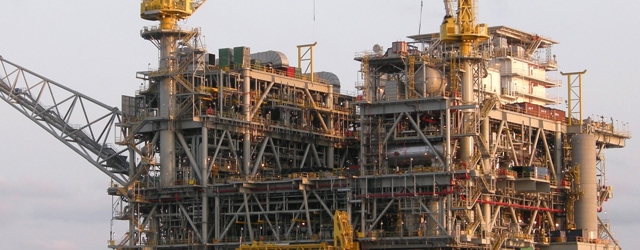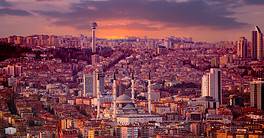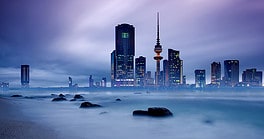With government revenues battered by the fall in oil prices, the need to diversify its economy could see Angola return to farming. But it can’t come quickly enough for the country’s ailing economy.

With its currency battered, inflation running high and government revenue down to historical levels, Angola, Africa’s largest oil producer, must now address the fundamental cause of its macroeconomic imbalances. The southwest African country must reduce its dependence on oil, which has left it vulnerable to the crash in oil prices over the last two years.
Angola relies on oil exports for more than 90% of exports. With the slump in the price of oil, government income has fallen significantly. Angola’s currency, the kwanza, lost 18.9% in 2016 following several devaluations that year; inflation at the end of the year stood at 42%, a steep rise from an all-time low of 6.9% in June 2014.
Government revenues are unlikely to rebound anytime soon. While oil prices saw a modest rally toward $55 a barrel, Angola has had to cut supply by 78,000 barrels per day on the back of OPEC’s agreement to reduce supply by 1.2 million barrels per day. Diamonds are the second highest source of fiscal revenue and foreign currency earnings, but they have not seen as much growth in terms of output—levels have oscillated around
9 million carats per annum.
For an import-dependent nation, the current macroeconomic imbalance is unsustainable, says Abiola Rasaq, head of investor relations at Lagos-based United Bank for Africa, which has branches in Nigeria and 18 other African countries. “There are no quick fixes, except that the Angolan economy needs to be diversified away from its dependence on oil and diamond mining,” says Rasaq. “There is a need to deepen agriculture and agro-allied processing, which is the first step toward building an industrial base for the Angolan economy.” While the current low price of oil persists, the economy will remain “soft for some years,” he adds.
NEW SOURCES OF GROWTH
Angola’s drift from agriculture to oil has taken decades, and a reversal of that will not come easy. Up until two years before independence in 1975, coffee was the dominant foreign exchange earner; but the war for independence devastated the coffee plantations, and from that point oil began to displace it. The decline in agriculture was further accelerated by the 1975–2002 civil war, which destroyed rural infrastructure.
Rasaq believes the government is willing to diversify the economy and that now there is a stronger will to put it into action. He says there is need to pursue relevant reforms that encourage people to return to farming with the confidence of being able to earn a good living.
Angola’s story is similar to that of Nigeria’s. Prior to the discovery of oil in commercial quantities in Nigeria, agriculture was the mainstay of the economy, with commodities such as palm oil, cocoa and groundnut being the main foreign exchange earners. Subsequently, oil displaced agriculture from the export list. But several decades later, battered by the fall in oil prices, Nigeria is seeking to diversify its economy away from oil—and the agricultural sector is the first choice.
Rasaq believes resource-rich African nations like Angola and Nigeria need to return to renewable sources of wealth that have better value addition. In particular, he says they should tackle the phenomenon of no or low-value addition to the natural resources they have. Diversification into agriculture will require funding. Angola cannot afford to wait for a complete rebound in the oil market. “There should be increased investment in agro-allied processing and manufacturing,” says Rasaq, “as only through this can Angola achieve a sustainable recovery in its economy.”
RISING DEBTS
China has been a major player in the Angolan economy, so Rasaq expects it will play a significant role in the diversification drive. “The government of Angola will seek new forms of partnership with China, beyond infrastructure-led financing,” he says.
The dire need for diversification comes at a time when the government’s financing options are getting slimmer. “We’ve become more concerned about the rise in Angola’s debt burden and the amount of new borrowing the government has done, the terms of which are unclear,” says Stuart Culverhouse, head of research and chief economist at London-based investment firm Exotix Partners.
If such debts are done on commercial terms at increasing interest rates, this will mean debt servicing will rise at a time when fiscal revenues are still under pressure. Culverhouse is concerned about the imbalance in the currency markets, with the widening between the official and parallel foreign exchange markets.
Rasaq adds that there is limited room for government borrowing at this time, with the debt-to-GDP ratio already in excess of 70%. Interestingly, Rasaq says the Chinese government has restated its commitment to help Angola and lent some $11 billion to the economy between Q4 2015 and the first half of 2016.
Rasaq says current challenges also call for further liberalization of the mining and the oil and gas sectors in Angola, with the target of raising much-needed capital to diversify the economy, create jobs and grow income levels of the lower and middle classes.Further liberalization of the economy will stimulate private capital flows into Angola, he says. When Angola became independent in 1975, it adopted a socialist system of government; but over time, outgoing president José Eduardo Dos Santos has progressively liberalized the economy, tilting it toward a market system. Despite this, there is significant room for further liberalization, says Rasaq.
In the short-to-medium term, Rasaq says, there are not many options available to the government. “Should there be another oil price boom, it may provide a big push for the economy,” he notes. But he stresses that, with the current outlook on oil prices, the path to diversification may be relatively stretched and may require some intermittent adjustments in the economy.
Both Rasaq and Culverhouse believe the spike in inflation to the current level was a consequence of a weaker currency. The kwanza has depreciated by nearly 40% against the US dollar since the end of 2014, says Culverhouse, “as the government, correctly in our view, adjusted the currency in response to the decline in oil prices.”
However, given the deviation between the official and parallel exchange rate, further devaluation is expected. This will feed into higher inflation expectations and will require tightening of both monetary and fiscal balances.
Such policy trade-offs are most likely to further hurt the poor, says Rasaq. Income levels are low, and the average citizen is grappling with the impact of inflation. Perhaps the fulcrum on which the entire picture hangs is the general election slated for this August. Since independence, Angola has been ruled by the MPLA (People’s Movement for the Liberation of Angola).
The election will be held against the backdrop of the retirement of the current president, who has been in power for 37 years, as of last September. Santos succeeded Angola’s first president, António Agostinho Neto. Santos confirmed in February that he will not run in the election. Last December, the MPLA selected Defense minister João Lourenço to be its presidential candidate. He is considered part of the “old order,” says Rasaq, and will likely win the election. Should this happen, there will be little change in institutions and governance philosophy in the near term, he concludes.
Exotix’s Culverhouse draws the same conclusions. “We don’t expect any election surprises, although incumbents tend to suffer when the economy is deteriorating,” he says. He adds that investors will be watching for policy direction under the new president, measures to strengthen institutions and governance, and signs as to whether party unity can be maintained after succession.
GFmag.com Data Summary: Angola
|
Central Bank: National Bank of Angola | |||
|
International Reserves |
$23.8 billion (2015) | ||
|
Gross Domestic Product (GDP) |
$102.3 billion (2017 estimate) | ||
|
Real GDP Growth |
2015 3.0% |
2016* 0% |
2017* 1.5% |
|
GDP Per Capita—Current Prices |
$3,630 (2017 estimate) | ||
|
GDP—Composition By Sector |
agriculture: 10.2% |
industry: 61.4% |
services: 28.4% |
|
Inflation |
2015 10.3% |
2016* 33.7% |
2017* 38.3% |
|
Public Debt (general government |
2015 64.2% |
2016* 77.7% |
2017* 73.6% |
|
Government Bond Ratings (foreign currency) |
Standard & Poor’s B |
Moody’s B1 |
Moody’s Outlook NEG |
|
FDI Inflows |
2013 $-7.1 million |
2014 $1.9 million |
2015 $8.7 million |
* Estimates Source: GFMag.com Country Data



